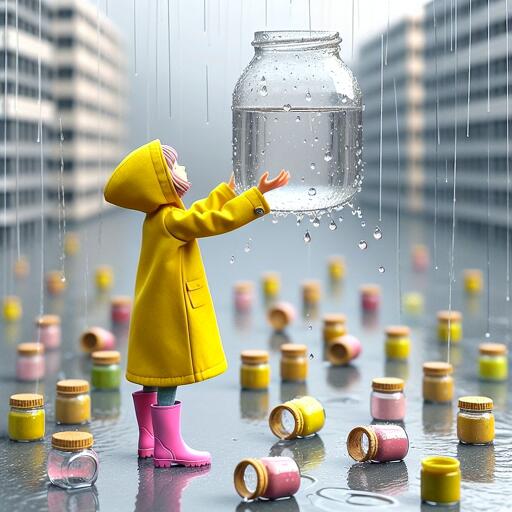
Go, Catch the Rain
In an era where urban lakes are dwindling in quality, a simple solution lies in the heart of the city – rainwater harvesting (RWH). A study focusing on six urban lakes adjacent to metro lines unveils how these natural reservoirs can be revitalized by catching the rain.
An insightful analysis reveals that six city lakes – situated less than 300 meters from metro lines – possess a golden opportunity to enhance their water quality through rainwater harnessing. These lakes, known as Benniganahalli, Kengeri, Nayandahalli, Lalbagh, Dasarahalli, and Yediyur, currently endure various degrees of pollution and could significantly benefit from a well-placed RWH system.
The initiative draws inspiration from the proximity of these lakes to metro construction, suggesting that rainwater runoff from metro pillars could serve as an untapped resource to replenish the lakes with fresh water. While Kengeri and Nayandahalli Lakes are already receiving tertiary treated water, and Lalbagh Lake benefits from an existing treatment plant, the introduction of rainwater could further enhance their ecosystems.
Historically, these lakes have struggled with water quality issues, including alarmingly high levels of pollution and bacteria. However, the infusion of rainwater, free from such contaminants, offers a beacon of hope. The concept is not only practical but imperative for the wellbeing of these water bodies and the biodiversity they support.
Interestingly, a recent move by local authorities to implement RWH systems under metro viaduct tracks demonstrates a growing recognition of rainwater’s potential. This initiative aims to recharge groundwater levels and suggests that extending such efforts to lake rejuvenation could yield significant ecological benefits.
The assessment from ActionAid Association highlights that varying distances of the lakes from metro lines do not deter the feasibility of this solution. With metro lines as close as 30 meters to some lakes and not more than 260 meters for others, the potential to catch and redirect rainwater into these lakes is within reach.
Community engagement further emphasizes the difference rainwater can make. The transformation at Doddakallasandra Lake, driven by local advocacy for an RWH system, stands as a testament to how rainwater input can transition lakes from polluted waters to thriving ecosystems.
The impact of improved water quality extends beyond the mere aesthetics or usability of these lakes; it is a lifeline for the myriad of bird species that these waters attract. From Benniganahalli Lake, a haven for over 45 bird species including migratory visitors, to Lalbagh Lake’s impressive congregation of 155 species, the ecological richness these lakes offer is invaluable. Ensuring these habitats remain vibrant requires concerted efforts to maintain and improve their water quality.
In conclusion, the case for utilizing rainwater as a sustainable solution for urban lake rejuvenation is compelling. The success of such initiatives not only promises to restore the health of these vital ecosystems but also reiterates the critical role of community involvement and innovative water management strategies in urban development. This endeavour, though nascent, has the power to transform Bengaluru’s lakes into flourishing havens once again, offering sanctuary to diverse wildlife and enriching the city’s natural heritage.





Leave a Reply